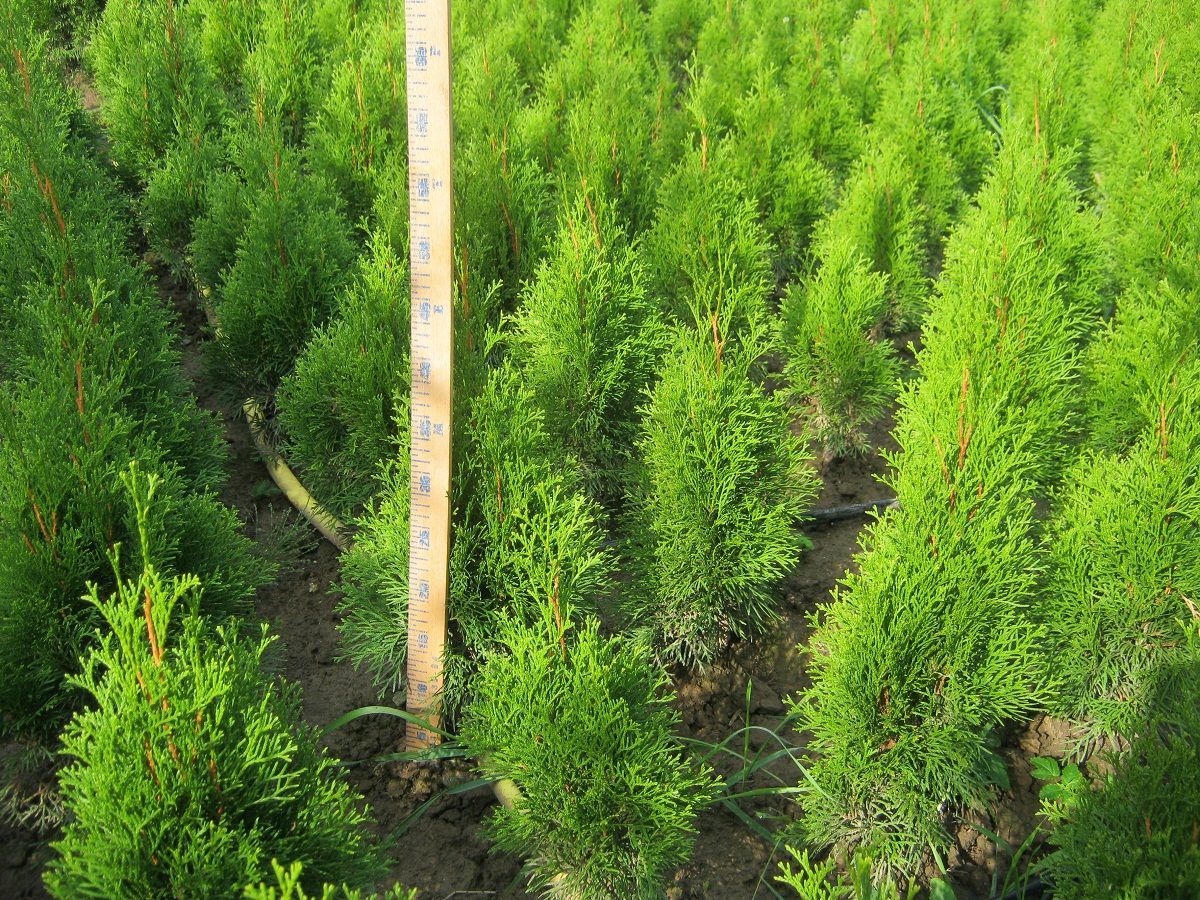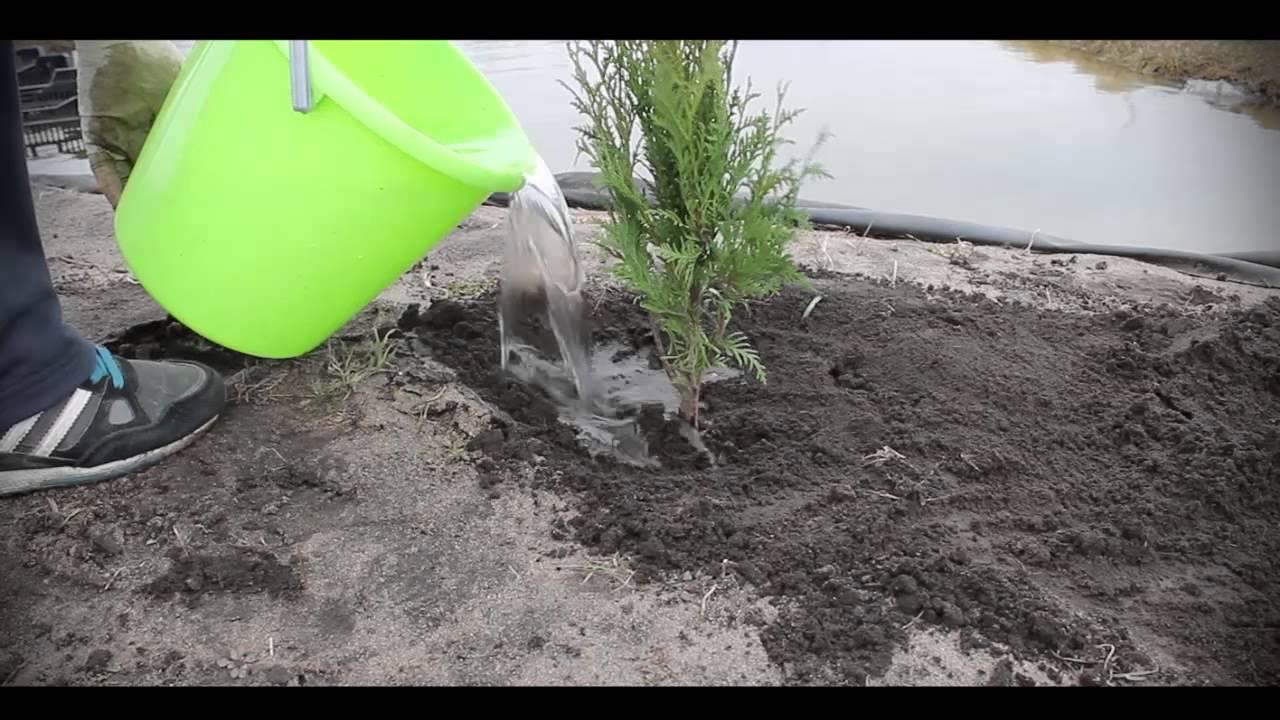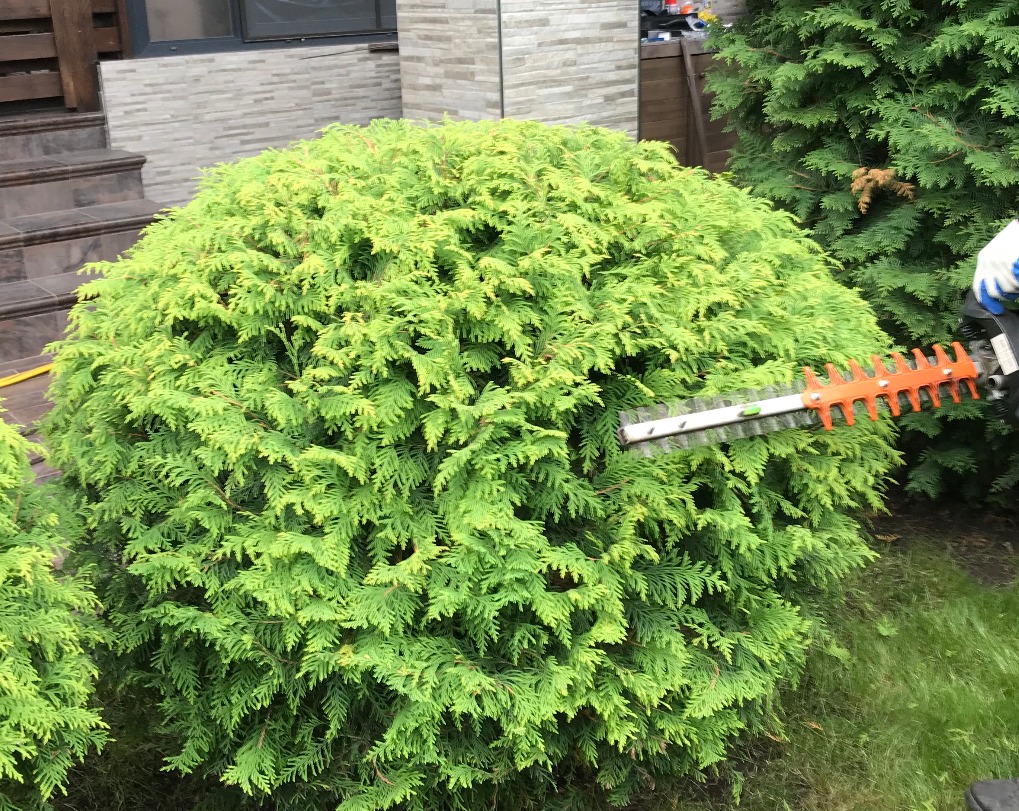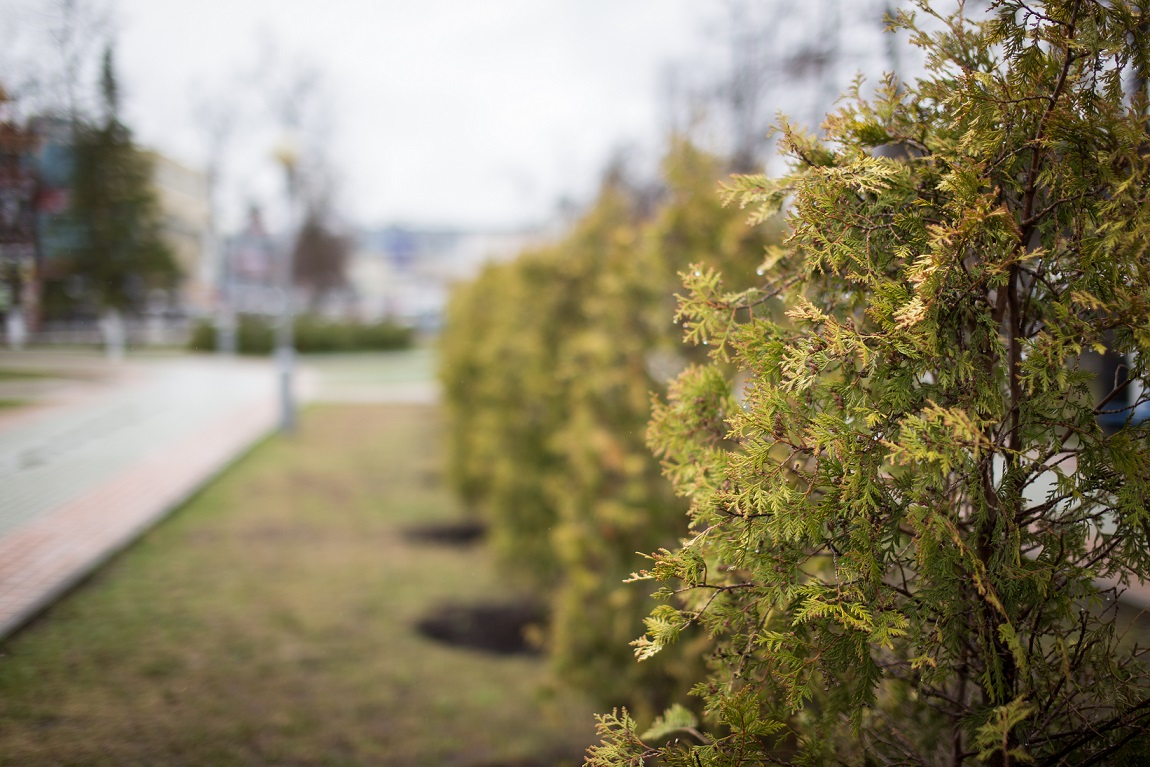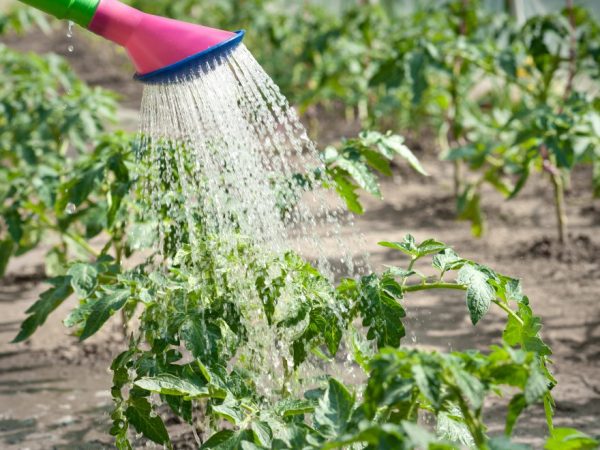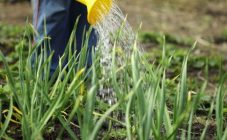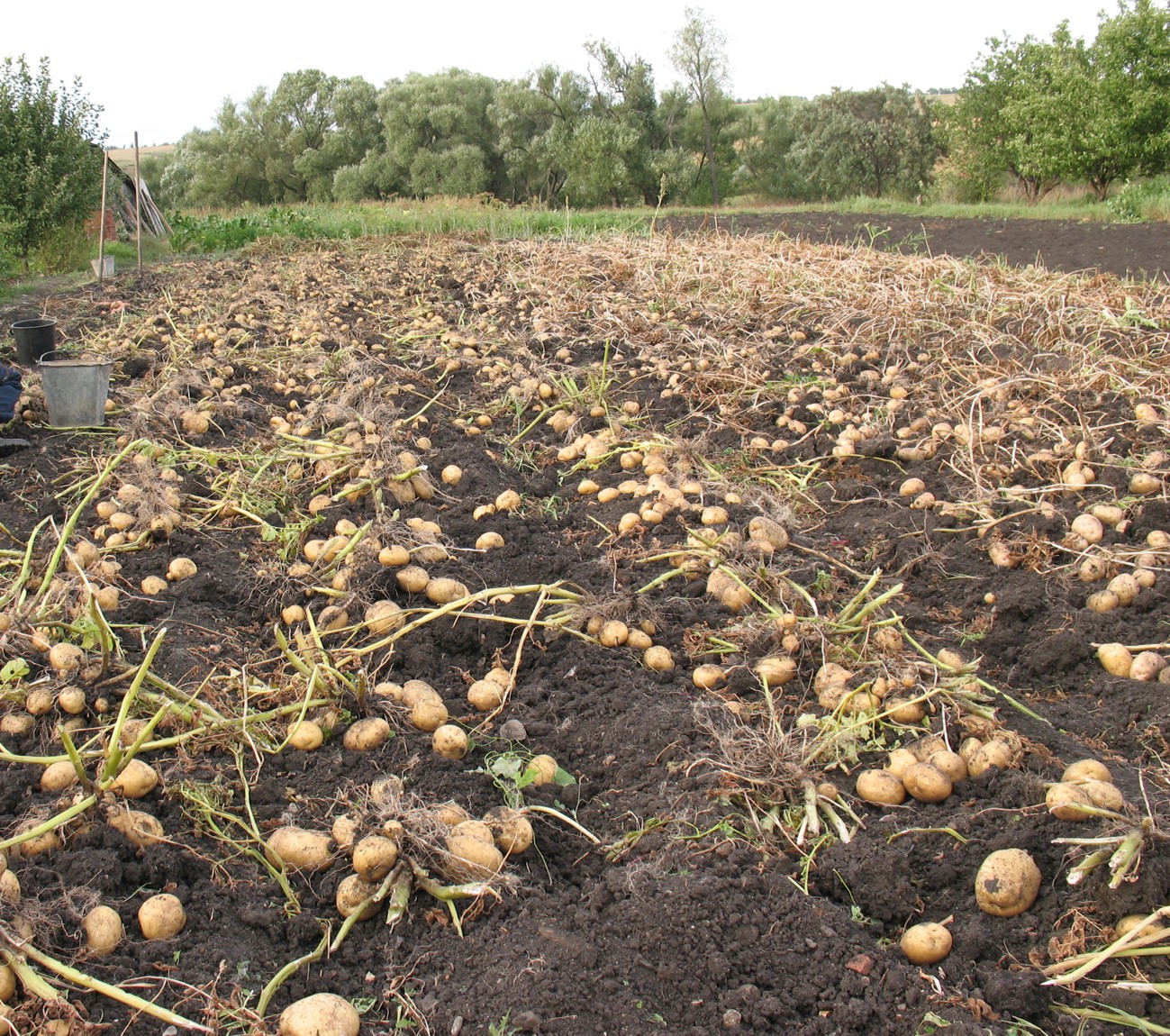Content:
Thuja is an evergreen plant used for landscaping home gardens. It is suitable for creating beautiful hedges, alleys. A very pleasant aroma comes from them.
The extension of its life and the creation of real garden and park masterpieces depend on how to care for the thuja in the country.
Description
This plant is not found in Russian climatic conditions. His homeland is America and East Asia. But the tree has taken root quite well in our environment. Some of its varieties are grown even in the north of Russia.
The plant belongs to Cypress. It is evergreen, the needles are composed of scales overlapping each other. At home, it almost always grows to a height of 20 m, but in Russia it rarely reaches 11 meters in height.
There are such types of thuja:
- Thuja western ("Smaragd") - the most common type in gardening. It has a large number of varieties.
- Japanese thuja grows in highlands. Its difference is beautiful needles with different colors. In a summer cottage it can have a height of up to 18 m. In large cities it takes root with difficulty.
- Korean thuja has a wide, spreading crown and soft needles.
- Folded thuja is very sensitive to cold. The plant is very tall and can reach a height of 60 m. It has a pleasant aroma.
- Eastern thuja has medicinal properties. Its branches resemble a fan. The plant does not tolerate frost well.
Plant care
Thuja care in spring and summer is not particularly difficult. If you follow all the recommendations, the plant will not hurt and will tolerate adverse climatic conditions well. How to care for thuja depends on its condition.
Landing
These trees give seeds. They have bumps, each of which has seeds. They ripen by autumn and at this time are already suitable for reproduction. A seedling grows from a seed. It has been growing for 5 years. During this time, the plant adapts to harsh winters. The seeds can also be grown at home in a pot.
Choose a sunny place for landing. The soil must be nutritious. Seeds are best planted in spring. The depth at which the seeds should be is no more than 5 cm. The place where this coniferous tree is sown should be sprinkled with a small layer of sawdust from the needles.
Young shoots will grow from these seeds. They should be protected from direct sunlight. You need to be very careful when weeding because the young shoots are very tender.
The soil under these plants needs loosening and constant moisture. The shoots must be fed with slurry with manure. For its preparation, manure should be diluted in water (for 1 liter of water - 50 g of manure).
Reproduction by shoots
Thuja can reproduce with the help of shoots. To do this, you need to prepare cuttings from shoots that are 2, or even better 3 years old. A growth can also be planted, but it must have a piece of old wood. Cuttings are treated with a special preparation - heteroauxin.
For better rooting of cuttings, turf and peat should be used. Cuttings are planted to a depth of no more than 2.5 cm. It is best to take care of them in a greenhouse (in these conditions, they can be protected from direct sunlight).
Watering
Gardeners are interested in how often to water the thuja. For plants planted in the warm season, watering of the thuja is required once a week (if the weather is not hot). If the air is very dry and hot, watering is increased up to 2 times during the week. At least a bucket of water should be added under each shrub.
During the first month of life, the plant needs to be sprinkled. With this type of watering, the pores open and the tree begins to breathe. It is necessary to water the trees once a week. Its further growth depends on how to water the thuja.
Watering has not been stopped since about August. It is needed for the plant to gain moisture for a good wintering.
Top dressing
Gardening enthusiasts are interested in how to feed the thuja in summer.
When feeding, you should pay attention to the following recommendations:
- Top dressing is done only in spring and summer; at other times it is inappropriate to do it.
- It is recommended to use the Zircon solution, which has a beneficial effect on the growth of the root system and on the absorption of useful components by the tree.
- In spring, it is recommended to spray the trees with Iron Chelate. It prevents the development of chlorosis.
- With a decrease in the intensity of growth, use "Megafol", "Vermiculite".
Loosening, mulching
It is necessary to loosen the soil near this plant to a depth of at least 10 cm. This is due to the location of the plant's root system.
Thuja summer care methods involve mulching. It is carried out using peat. Its layer should not exceed 7 cm.
Haircut and trim
In order for a tree to develop correctly and have a beautiful crown, it must be pruned. Most species in the process of growth acquire one or another crown shape. With the help of cropping, you can give it the desired look. Sanitary pruning is required in the event that yellow, damaged branches appear.
The frequency of pruning depends on the intensity of growth (it does not exceed 35 cm per year, in some varieties it reaches 10 cm during the year). The timing of the formation of the crown is regulated as follows:
- When budding - about 10 days after the average temperature outside has reached the 10-degree mark.
- During flowering, shoots are cut in the north-western region - at the end of May or early June, in the middle lane - in mid-May, in the south - in April.
Leaving during flowering
When thuja grows, it is very important to protect it from direct sunlight. The plant should also be protected from pests. For this, there are fungicides.
If the plant has been damaged by sunlight, it is advisable to use the Epin solution.
Plant care in autumn
Thuja requires careful care in the fall. After September, the tree must be cut and insulated. Dead branches should be removed.
You can prune the plant in warm weather at a temperature of at least 4 ° C. Pruning is not done just before frost - branches need time to recover and frost can damage them.
After pruning, the tree needs to be fed and watered.
Warming for the winter is carried out in the following order:
- The roots are insulated with straw, compost, manure, peat (layer - up to 30 cm).
- The crown of a young tree should be covered with a five-liter bottle.
- The crown of an adult tree needs to be wrapped with a layer of thick paper.
- The bark must be protected from sunburn with shields.
Diseases and pests
Thuja pests are:
- speckled moth, leading to the death of the tops of the shoots;
- false shield (affects young processes);
- click beetle (damages the root system).
For pest control, pyrethroids, karbofos, actellic are used. Spraying with solutions of these drugs is carried out.
Tuyu can be amazed by:
- phytophthora, which destroys the root of the plant, which makes it wither and the trunk becomes soft;
- brown shoots (some scales turn yellow);
- fusarium.
You can prevent the development of these diseases with the help of fungicides. Fundazol is used to combat fusarium.
Thuja is a plant that requires proper care and maintenance. Correct pruning of the plant allows you to form a beautiful decorative crown and make the garden unique.
